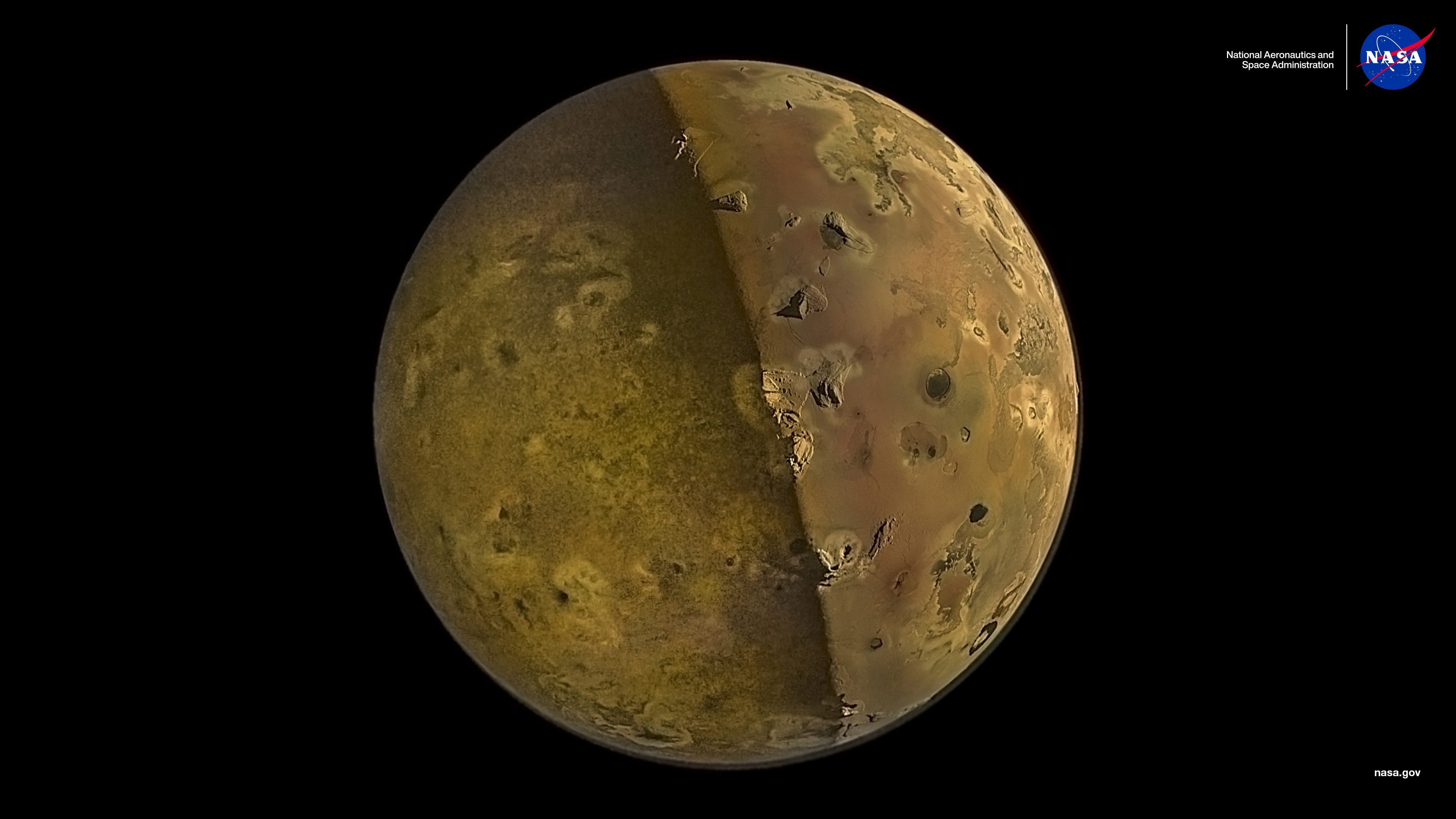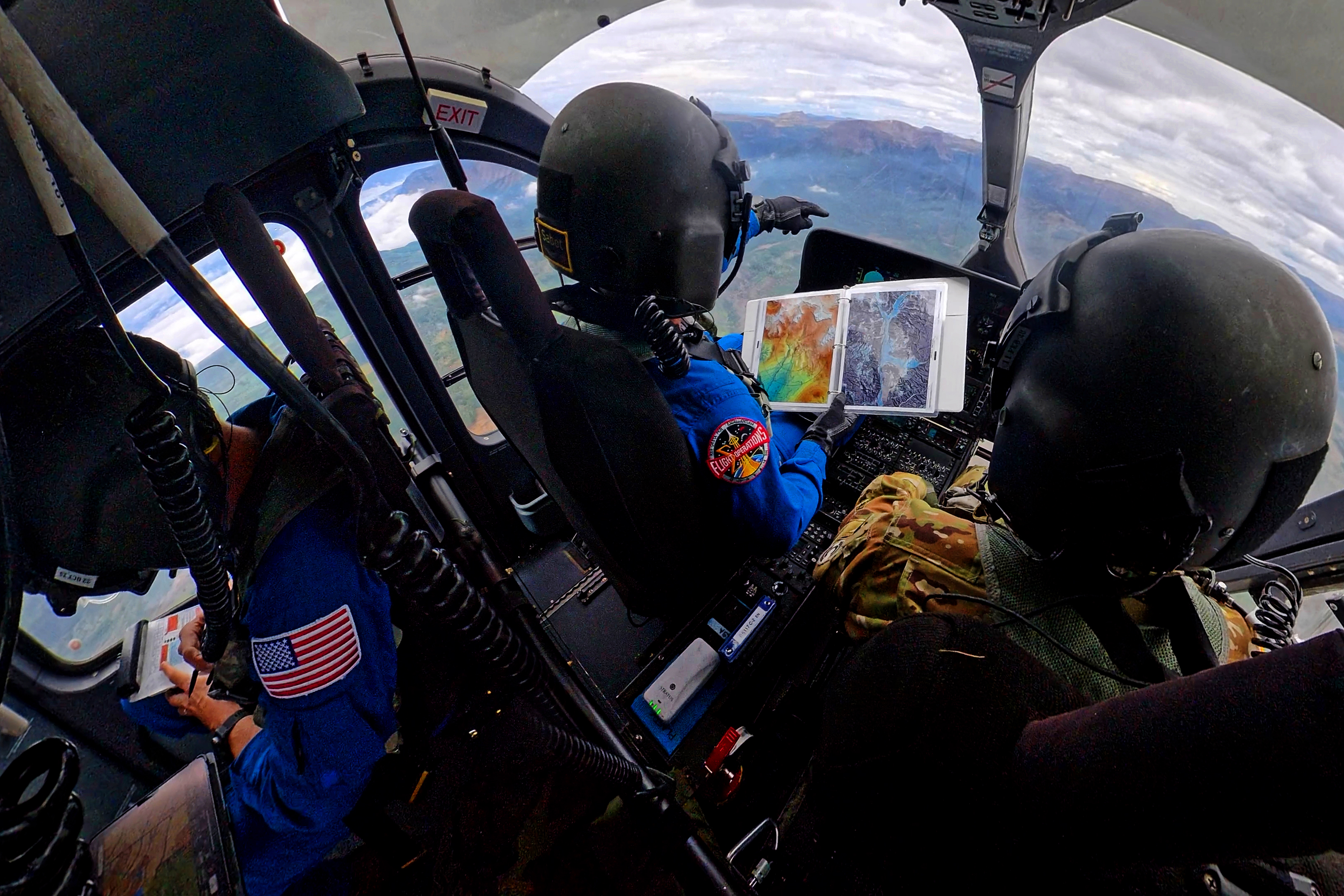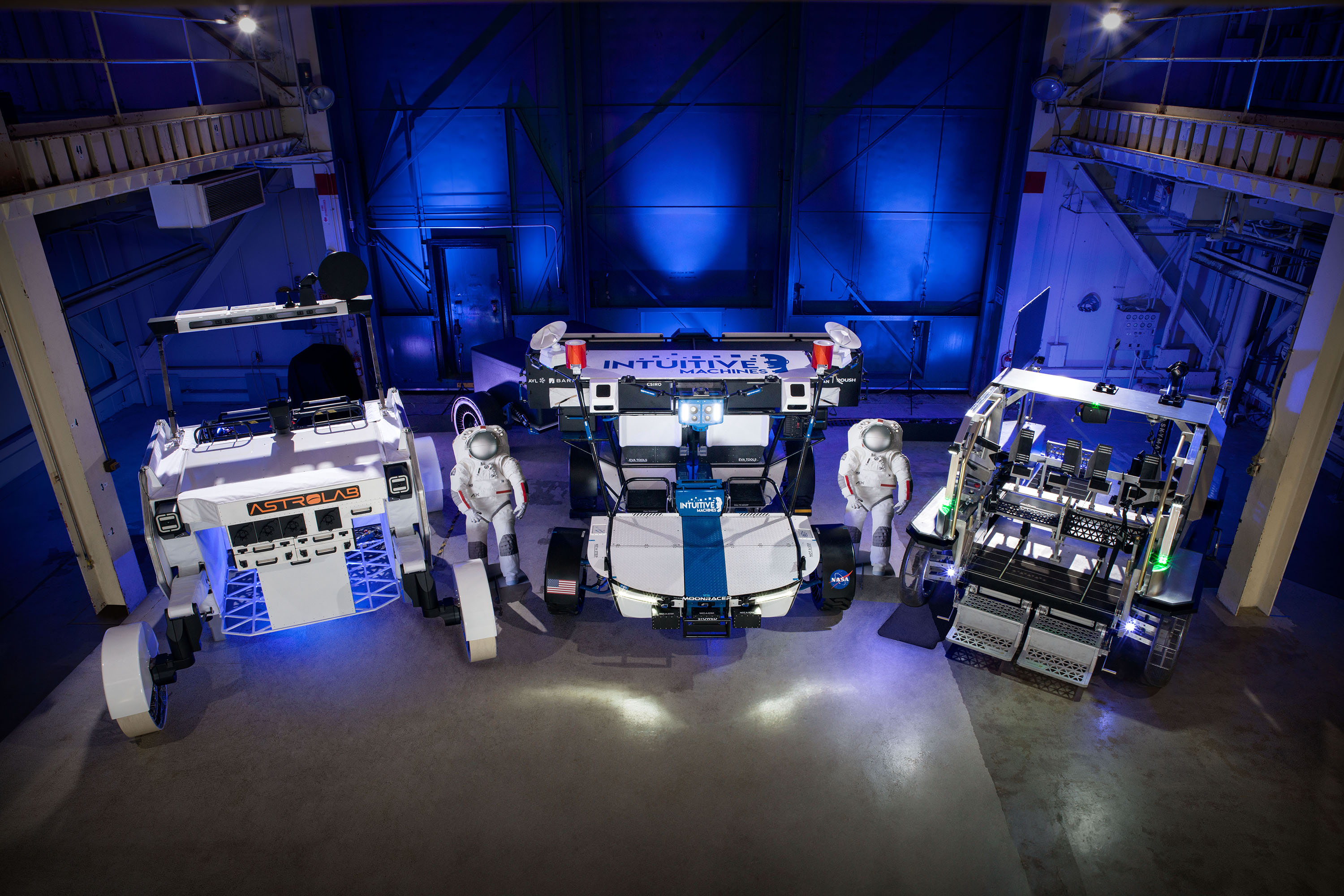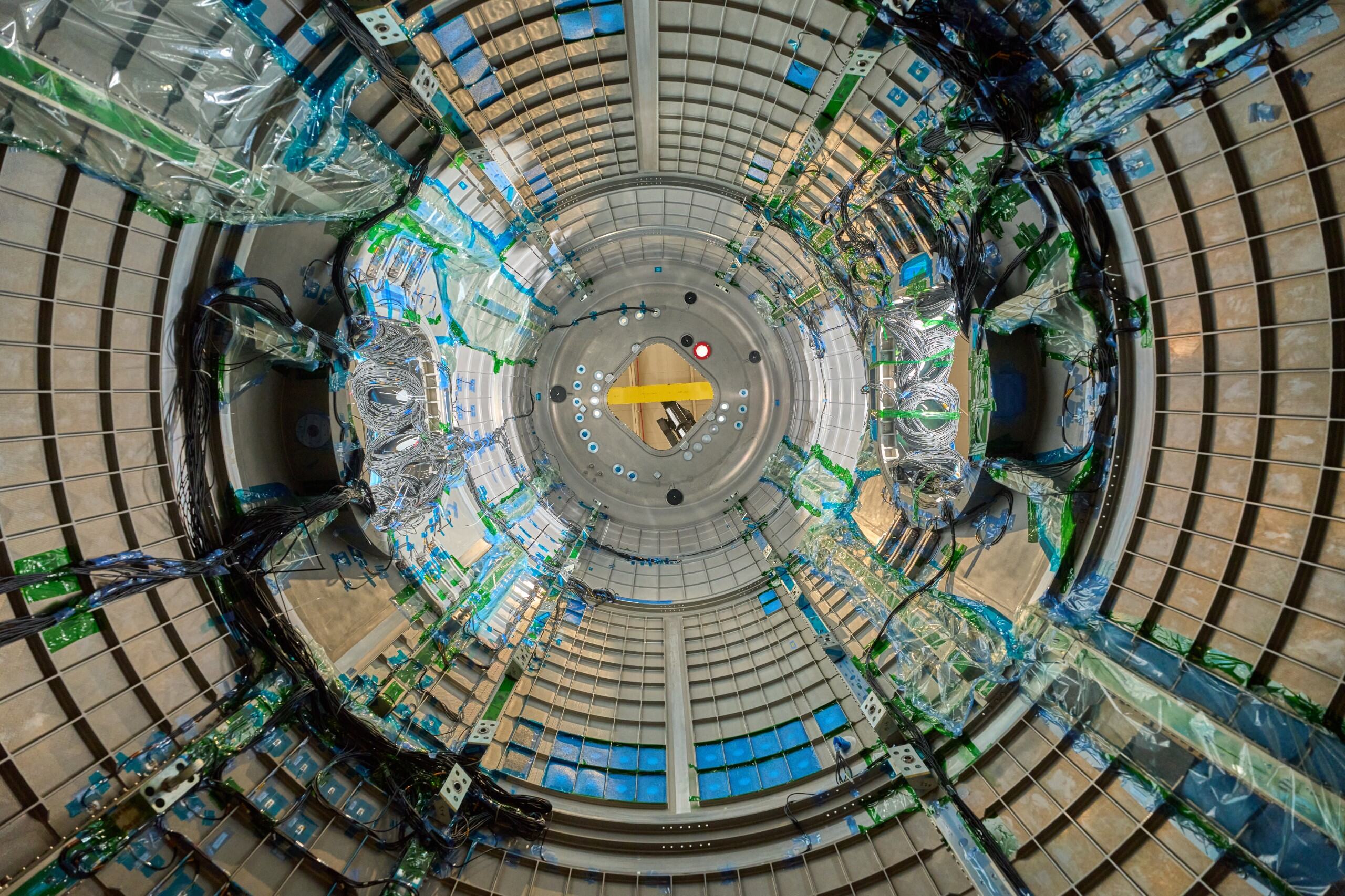

During its close flyby of Jupiter’s moon Io on December 30, 2023, NASA’s Juno spacecraft captured some of the most detailed imagery ever of Io’s volcanic surface. This image is the NASA Science Image of the Month for October 2025.
Read More

During its close flyby of Jupiter’s moon Io on December 30, 2023, NASA’s Juno spacecraft captured some of the most detailed imagery ever of Io’s volcanic surface. This image is the NASA Science Image of the Month for October 2025.
Read More

NASA astronauts Matthew Dominick (left) and Mark Vande Hei (right) prepare to fly out to a landing zone in the Rocky Mountains as part of the certification run for the NASA Artemis course at the High-Altitude Army National Guard Aviation Training Site in Gypsum, Colorado, Aug. 26.
Read More

The Moon’s light is refracted by Earth’s atmosphere, giving it a spheroid shape in this April 13, 2025, photograph from the International Space Station as it orbited into a sunset 264 miles above the border between Bolivia and Brazil in South America.
Read More
| Picture of the day |
|---|

|
|
Composite image of Ganymede, the largest and most massive moon of Jupiter, taken by the Juno spacecraft on this day in 2021.
|


NASA’s Exploration Ground Systems’ Program Manager Shawn Quinn captured this image of the Hadley–Apennine region of the moon including the Apollo 15 landing site (very near the edge of the shadow of one of the lunar mountains in the area).
Read More

NASA astronaut Bob Hines took this picture of the waning crescent moon on May 8, 2022, as the International Space Station flew into an orbital sunrise 260 miles above the Atlantic Ocean off the northwest coast of the United States.
Read More

The waning gibbous moon sets behind a flag at NASA’s Michoud Assembly Facility in New Orleans just after sunrise on Wednesday, March 19, 2025.
Read More

From the mountains of Turin to the deserts of Arizona, a core element of Gateway, humanity’s first lunar space station, is now one step closer to the Moon.
Read More

The four astronauts who will be the first to fly to the Moon under NASA’s Artemis campaign – NASA astronauts Reid Wiseman, Victor Glover, and Christina Koch, and CSA (Canadian Space Agency) astronaut Jeremy Hansen – have designed an emblem to represent their mission that references both their distant destination and the home they will return to.
Read More

Teams with NASA’s Exploration Ground Systems and primary contractor Amentum integrate the SLS (Space Launch System) Moon rocket with the solid rocket boosters onto mobile launcher 1 inside High Bay 3 of the Vehicle Assembly Building at NASA’s Kennedy Space Center on Sunday, March 23, 2025. Artemis II is the first crewed test flight under NASA’s Artemis campaign and is another step toward missions on the lunar surface and helping the agency prepare for future human missions to Mars.
Read More

A NASA photographer captured a time-lapse image of the lunar eclipse and blood moon above the Space Environments Complex at NASA’s Glenn Research Center at Neil Armstrong Test Facility in Sandusky, OH on March 14, 2025.
Read More

NASA Artemis II Crew Public Affairs Officer Courtney Beasley, left, moderates a panel discussion with CSA (Canadian Space Agency) astronaut Jeremy Hansen, NASA astronauts Christina Koch, and Reid Wiseman, right, as they discuss their mission around the Moon next year aboard Artemis II, the first crewed test flight under NASA’s Artemis campaign, Friday, March 7, 2025, at SXSW in Austin, Texas.
Read More

Carrying a suite of NASA science and technology, Firefly Aerospace’s Blue Ghost Mission 1 successfully landed at 3:34 a.m. EST on Sunday, March 2, 2025, near a volcanic feature called Mons Latreille within Mare Crisium, a more than 300-mile-wide basin located in the northeast quadrant of the Moon’s near side.
Read More

Creating a golden streak in the night sky, a SpaceX Falcon 9 rocket carrying Intuitive Machines’ Nova-C lunar lander (IM-2) soars upward after liftoff from Launch Complex 39A at NASA’s Kennedy Space Center in Florida at 7:16 p.m. EST Wednesday, Feb. 26 as part of NASA’s CLPS (Commercial Lunar Payload Services) initiative. The IM-2 launch is carrying NASA science, technology demonstrations, and other commercial payloads to Mons Mouton, a lunar plateau to advance our understanding of the Moon and planetary processes, while paving the way for future crewed missions.
Read More

Engineers with NASA’s Exploration Ground Systems complete stacking operations on the twin SLS (Space Launch System) solid rocket boosters for Artemis II by integrating the nose cones atop the forward assemblies inside the Vehicle Assembly Building’s High Bay 3 at NASA’s Kennedy Space Center in Florida on Wednesday, Feb. 19, 2025. The twin solid boosters will help support the remaining rocket components and the Orion spacecraft during final assembly of the Artemis II Moon rocket and provide more than 75 percent of the total SLS thrust during liftoff from NASA Kennedy’s Launch Pad 39B.
Read More

The full moon rises over the Superdome and the city of New Orleans, Louisiana on Monday evening, January 13, 2025. The Wolf Moon, also known as the Ice or Cold Moon, was full at 5:27 p.m. EST. New Orleans is home to NASA’s Michoud Assembly Facility where several pieces of hardware for the SLS (Space Launch System) are being built.
Read More

An excellent view of the Apollo 14 lunar module on the Moon, as photographed during the first Apollo 14 moonwalk on the lunar surface. The astronauts have already deployed the U.S. flag. While astronauts Alan B. Shepard Jr., commander, and Edgar D. Mitchell, lunar module pilot, descended in the lunar module to explore the Moon, astronaut Stuart A. Roosa, command module pilot, remained with the command and service modules in lunar orbit.
Read More

The full Moon, also known in January as the Wolf Moon, rises above the Lincoln Memorial and the Memorial Bridge, Monday, Jan. 13, 2025, as seen from Arlington, Virginia.
Read More

The New York-based artist team Geraluz, left, and WERC, right, and their son Amaru Alvarez, 5, pose for picture with the mural “To the Moon, and Back” by the artist team that was created as part of the reimagined NASA Art Program, Tuesday, September 24, 2024, at 350 Hudson Street in New York City. The murals use geometrical patterns to invite deeper reflection on the exploration, creativity, and connection with the cosmos.
Read More

Through NASA’s Artemis campaign, astronauts will land on the lunar surface and use a new generation of spacesuits and rovers as they live, work, and conduct science in the Moon’s South Pole region, exploring more of the lunar surface than ever before. Recently, the agency completed the first round of testing on three commercially owned and developed LTVs (Lunar Terrain Vehicle) from Intuitive Machines, Lunar Outpost, and Venturi Astrolab at NASA’s Johnson Space Center in Houston.
Read More

A maze of cables and sensors snakes through a major piece of Gateway, humanity’s first space station around the Moon, during a key testing phase earlier this year to ensure the lunar-orbiting science lab can withstand the harsh conditions of deep space.
Read More

An atmospheric probe model attached upside down to a quad rotor remotely piloted aircraft ascends with the Moon visible on Oct. 22, 2024. The quad rotor aircraft released the probe above Rogers Dry Lake, a flight area adjacent NASA’s Armstrong Flight Research Center in Edwards, California. The probe was designed and built at the center.
Read More

NASA astronaut Victor Glover (right) takes photos during a visit on Friday, Nov. 8, 2024, with employees at NASA’s Kennedy Space Center in Florida. The employees support the agency’s Exploration Ground Systems Program to help NASA send astronauts, including Glover, to the Moon and back through the Artemis II launch.
Read More
In the vibrant style of Pop Art, a child in a spacesuit sits on a crescent moon, playfully engrossed with a pail and shovel. The scene bursts with bold, dynamic hues of red, yellow, and orange, creating a striking contrast against the dark void of space. The child’s spacesuit gleams with sharp, graphic lines, while the moon, depicted in a vivid, fiery orange, exudes a playful, surreal quality. In the background, Earth hovers like a colorful jewel in the sky, rendered in bright, contrasting colors that make it pop. The entire composition is infused with a sense of whimsy and modernity, capturing the imagination in a bold, eye-catching palette.
Read More